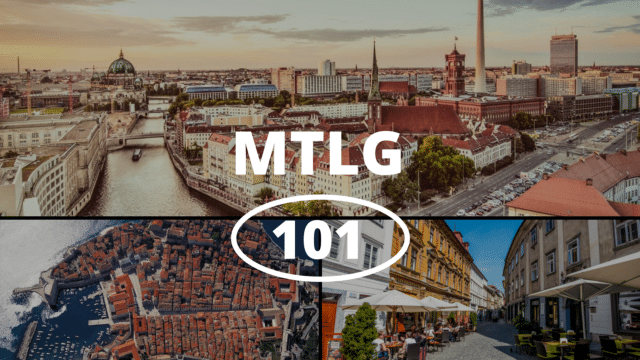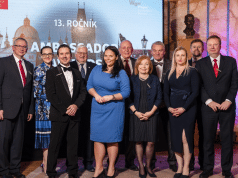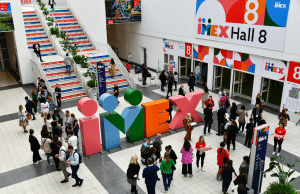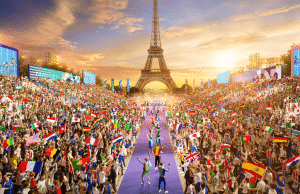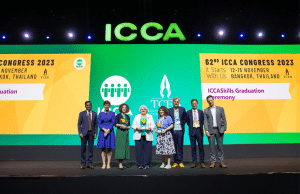We have collected the answers to some of the most common questions you are asking us about the Meetologues. If you do not find an answer to your question, ask us a new question. We will be happy to answer it.
FAQ
How do you really evaluate individual destinations?
The destinations are evaluated on the basis of field work done by one of our journalists and thorough research of individual criteria, in order to get as close as possible to the real situation. In addition, we are committed to reality, verifiability and objectivity. Every year we review and re-evaluate the destinations according to the new information that the destination representatives provide.
How did you get the idea of preparing congress travel?
We dare to state that we were the first who developed the new journalistic genre of congressional travel journals – Meetologues, in which we discover new congress destinations based on extensive field research. In doing so, we try to write without “unnecessary luggage”. We want to get closer to objective situations, so our reporters use a special matrix, which we named the Congressional Destination Index. This is a reference system that we are using from the beginning and allows a real comparison of the destinations over time.
Why do we need congressional travel and destination assessment?
Congressional travelogues or Meetologues have become a strong reference point over the past decade for decision makers as well as for the event organizers, when choosing the destinations for their events, especially because of the Meetologues’ logic and the benefits they bring to all of the stakeholders. However, we are convinced that our evaluations are objective and helpful to event organizers, while at the same time they are a helpful tool for enabling destinations to improve in areas where the current situation is different from the competition.
Why is the evaluation important for the destinations?
Our evaluation is primarily a tool for improving the competitiveness of individual destinations. It offers an outward look at their destination with the aim of continually improving and achieving excellence. As this is a systematic and contingent process, the progress of the individual evaluated criteria can be monitored over time. Destinations use our methodology primarily because they want to become or remain worldly competitive.
What differs MTLG from the other evaluation scales?
It is a systematic, structured and analytical process that covers a number of factors, which are defined as important by event organizers. We dare to state that this is the most complex assessment of destinations, which is not based solely on the number of congress events in the destination, but is analytically much deeper. We are proud that our methodology triggers positive changes in destinations and has become a standard.
Why do you use different destination categories (XL, L, M and S destinations)?
Over 90 destinations from the wider region of New Europe are covered in the categorization and evaluation. With the help of different categories, we enable event organizers to choose a destination that suits their needs. Therefore, the category is more guided by what kind of event the individual destination is able to host from a logistical point of view and the general capacity that it offers. Our categorization includes a combination of criteria, the sum of evaluation points of indexes is the basis for classifying destinations into four categories.
What does the term New Europe mean?
The MTLGs were the first to introduce to the international markets the countries of South-Eastern, Central and Eastern Europe through convention programs, which we often rank in NEW EUROPE. Before, with the term New Europe, all the countries of Eastern Europe or the former Eastern bloc were described. Despite numerous stereotypes, the region boasts exceptional conditions for congress tourism: stunning history, rich cultural and historical heritage, excellent accessibility, affordable acceptance. Many new congress centers and hotels and creative solutions make the NEW EUROPE a fresh and desirable congress destinations.
What does the ACI index refer to?
Using the SEO NetScan connectivity model, the report provides indexes for direct, indirect and hub connectivity based on both quantitative and qualitative metrics. The airport connectivity index is made-up of both direct and indirect weekly frequencies, weighted by their quality. This means that this is not simply a measure of how many city pairs there are, or how many direct services there are. For the purposes of this report, connectivity is a composite measure of the number of destinations, the frequency of services and the quality of the connections (in the case of hubbing or indirect services).
You can check for further details at the following link:
www.aci-europe.org/policy/connectivity
Why do you use Numbeo index for several evaluations?
Because Numbeo is the largest online database, that does not depend on the media or the lobbies, and is co-created by portal visitors. Above all, we use it because we checked the Numbeo data in the filed and we found out that the data reflected the actual situation as well. And also because the value of the methodology was recognized by the world’s largest media. We are also proud that the idea originated in the Balkans. The author of the methodology is the genius former Google engineer Mladen Adamovic from Serbia.
Are you checking the Numbeo indices in the field?
In order to ensure that all data for individual destinations is actually checked in the field, and in case of major deviations, we also adapt accordingly.
What methodology do you use to evaluate Sustainable measures?
Here we come from the Purity and Cleanliness assessment in Prague, Czech Republic, which in our opinion very accurately defines how far the city is in this area. In Prague, for example, the total index is 568.67, while in Vienna it is 672.63, while in Ljubljana it is 643.57.
How do you evaluate the “Perception on sustainability” criteria?
This grade is connected to Numbeo Purity and Cleanliness index by Numbeo, but equipped with actual measures that destinations need to take in this field.
How do you evaluate “Public transport” criteria?
We also evaluate this criterion on the basis of Numbeo indexes (https://www.numbeo.com/traffic). If we take Prague and Vienna for example, the index for Prague for example in this segment is 110.37, whereas Vienna has an index of 75.17- the lower the index, the higher a destination positions. A similar difference is seen when comparing C02 emissions, which is 2206 in Prague and 1412 in Vienna.
Why is the ICCA ranking part of the evaluation?
It is the only such annual statistical report in the congressional segment that has more than 50 years history of data captured. We are aware of the shortcomings of the ICCA survey, since it does not cover all the events taking place at destinations, and does not cover corporate or economic-business and intergovernmental meetings and motivational trips, which represent an important part of the global meeting industry. For this reason, the ICCA index is only one of the criteria, but it does give a great deal of indication of the maturity of individual congress destinations.
How is the ICCA index calculated?
The final results for the current year are ranked according to the grade from 1 to 5. Specifically, the first and the second ranked destinations on the ICCA ranking get the scores 5, destinations that are ranked below 320 places get a score 1.02.
How can we independently check the quality of each rating?
We already upgraded the entire methodology last year with the benchmarking system, which we perform for individual congress destinations and we named it MTLG BENCHMARK. With our methodology, we save you a lot of valuable time, which you would otherwise have spent on comparing it with your main competitors.
FAQ
How do you rate the Tourist Information Centers?
This grade is based on actual visits to your information centers.
How do you assess the professionalism of the meetings industry?
This segment grades the responsiveness and professionalism of individual providers and is checked through actual RFP’s and offers. I could probably write an entire book about it, so if you have any questions I will gladly give you some more information. I believe this segment carries the biggest room for improvement.
How did you calculate the carrying capacity of individual congress destinations?
The complexity of the meetings industry means there are many possible variables that can contribute to defining the ‘size’ of a destination. We have been looking for those that are frequently considered to be closely connected and interdependent. This aspect of the defining criteria process necessitated a review of existing literature, which is quite limited in that field and is heavily reliant on the statistics prepared by the international association ICCA, which focuses on recording the number of association meetings and their participants at a destination. Our pillar capacity of meeting estimations were calculated based on criteria that were defined with the help of leading experts from various destinations and are as follows:
- Air accessibility of destinations
This assessment is based on the European air connectivity report, which is prepared annually by ACI Europe. Analysing connectivity data from the SEO Economic Research’s ‘Netscan’ connectivity model, the report provides in-depth insights into how well Europe is connected by air, both internally and with other regions in the world. It distinguishes between direct and indirect connectivity, and takes a special in-depth look at the dynamics at Europe’s hubs – which act as engines of connectivity for wider outreach.
- The number of 4* and 5* category hotel rooms
The development of meeting destination is directly linked to the number of hotel rooms it has, which according to our study reaches at least twice the maximum capacity of the plenary hall at the destination. The single use of rooms is dominated by congress guests and for business tourism, which includes the meetings industry, the use of rooms in the business categories of 4 and 5 stars is predominant. For that reason, only those hotels are assessed in this category.
- The number of 4* and 5* category hotels
To enhance destination comparisons, we also captured the number of 4 and 5 star category hotels that are predominantly used by congress guests. The number of such hotels is a unique indicator of how well a destination is adapted to business tourism and vice versa.
- Banquet hall maximum capacity
Practically every congress or event also plays host to a social event or a gala dinner. It is often the case that the maximum capacity of the hall for banquets dictates the maximum size of the congress that the destination is able to accommodate. This criterion is therefore extremely important to our assessment.
- The largest hall in the city in square meters
The size of the hall further dictates the size of the largest events and accompanying exhibitions that can ordinarily accompany such events. These are normally the multifunctional halls in congress and exhibition centres. This criterion is directly linked to exhibition activity, which is most highly developed in the so-called ‘meeting hubs’.
- Maximum hall capacity in theatre layout
Congress centre halls that are suitable for plenary sessions are assessed in this category. To make this a level assessment many sports facilities were excluded, as they typically lack the additional infrastructure required for the organisation of events.
- Population
A city or a town’s population tends to be the catalyst for development, transformation and, of course, also the generator of many events. Over the course of history the meetings industry has developed in the urban regions and is therefore considered one of the factors associated with metropolitanisation and the major conurbations in Europe.


